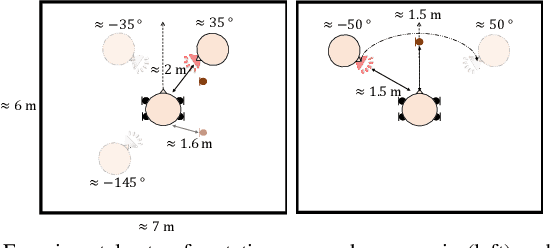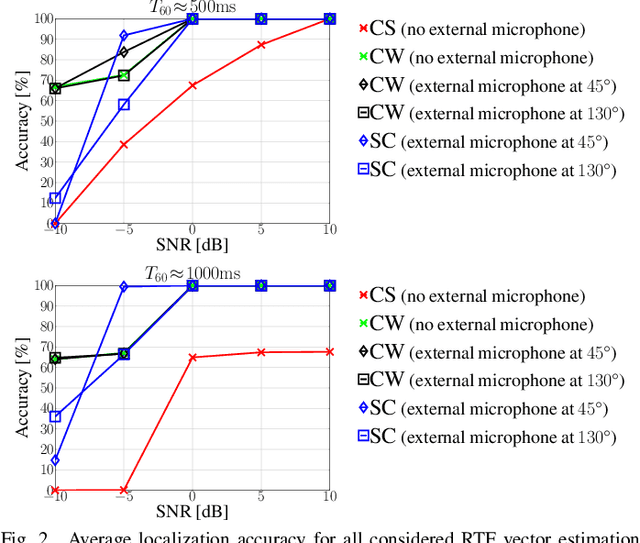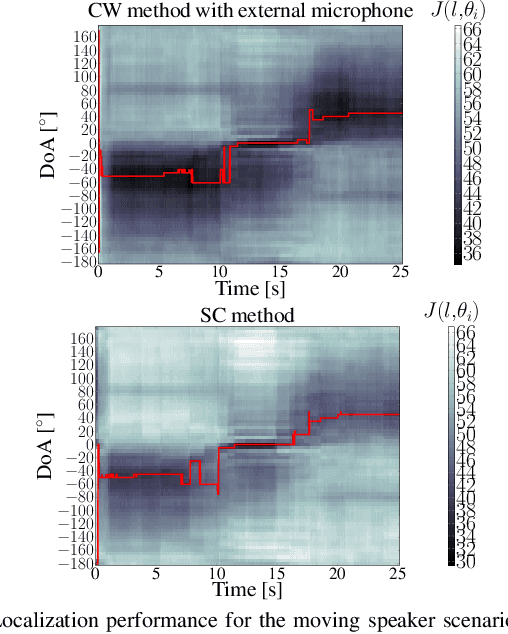Comparison of Binaural RTF-Vector-Based Direction of Arrival Estimation Methods Exploiting an External Microphone
Paper and Code
Apr 11, 2021


In this paper we consider a binaural hearing aid setup, where in addition to the head-mounted microphones an external microphone is available. For this setup, we investigate the performance of several relative transfer function (RTF) vector estimation methods to estimate the direction of arrival(DOA) of the target speaker in a noisy and reverberant acoustic environment. More in particular, we consider the state-of-the-art covariance whitening (CW) and covariance subtraction (CS) methods, either incorporating the external microphone or not, and the recently proposed spatial coherence (SC) method, requiring the external microphone. To estimate the DOA from the estimated RTF vector, we propose to minimize the frequency-averaged Hermitian angle between the estimated head-mounted RTF vector and a database of prototype head-mounted RTF vectors. Experimental results with stationary and moving speech sources in a reverberant environment with diffuse-like noise show that the SC method outperforms the CS method and yields a similar DOA estimation accuracy as the CW method at a lower computational complexity.
 Add to Chrome
Add to Chrome Add to Firefox
Add to Firefox Add to Edge
Add to Edge